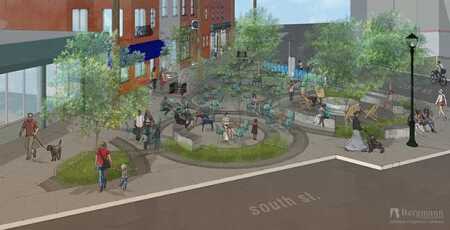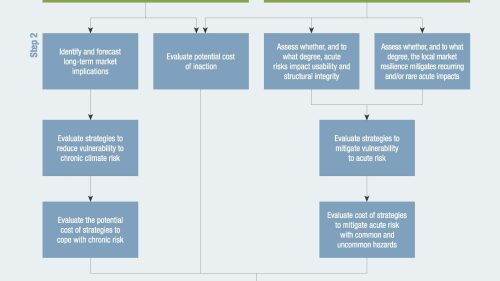A decade ago, the 2200 block of Grays Ferry Avenue, the one-third of a triangular intersection girding an inoperative 19th-century fountain, was mostly prized for the handful of parking spaces it offered. A one-way nub of a street running at an odd angle away from another one-way street—meaning motorists had to make a 45-degree turn to even travel down the street. Few bothered.
Today, the street is closed to vehicular traffic and festooned with planters, painted asphalt, café tables, and a bike-sharing station. The fountain has been repaired and “the Triangle” hosts an annual neighborhood festival while routinely accommodating spillover from adjacent bars and restaurants.
It took nine years and countless community meetings just to secure a temporary three-year street closure permit to make the project—supported by the local South of South Neighborhood Association (SOSNA)—a reality. But today it is regarded as a transformative step for a tight rowhome neighborhood with few other public spaces.
“Through the hard work of our volunteers and with the support of local businesses, we’ve been able to transform an underused street into a vibrant community gathering place,” says SOSNA president Lauren Vidas. “A block that saw little to no street activity is now one of the most popular places for neighbors to meet, listen to live music, and enjoy dinner or dessert.”
While the city supported the project, it was largely executed with volunteer labor and local fundraising. With a total cost of just $10,000, it is a model that planners hope other neighborhoods will emulate—and one that SOSNA is seeking to improve on with future investment.
The group is raising funds to implement a new plan developed by Bergmann Associates that would turn what is still essentially a blockaded street into a permanent plaza, adding decorative pavers and greenery while preserving the fountain.
Bergmann’s regional office manager, Sean O’Rourke, says the new design was crafted with strong input from the neighborhood association and surrounding businesses looking to amplify the success of the current space. A resident of the neighborhood, he also sat on the design committee for the new plaza.
“I have lived in the neighborhood for over 25 years. When we started to work on the design, we used my experience of the place and the neighborhoods . . . and our own sense of what makes ‘places’ to come up with a design,” he says. “I think everyone on the committee believes that making this a public plaza will significantly impact the local economy in positive ways. I think the majority of the community understands this, too.”
It wasn’t always quite as rosy of a picture, however. Unlike most municipal projects, where the biggest obstacle is funding or labor costs, the hurdle that the Triangle had to clear initially was a smattering of opposition to removing parking spaces.
Grief over parking shortages contributed to that lengthy nine-year timeline, and eventually a compromise was reached—three back-in spaces were awkwardly appended to the southern section of the pedestrian area to make up for lost street parking.
The spots have already been quietly phased out, Vidas says. There has since been little outcry—perhaps as a testament to the plaza’s newfound popularity.

![800Gray's_Ferry_Triangle_Before_Image_3[1]](https://cdn-ul.uli.org/dims4/default/9dd73bb/2147483647/strip/true/crop/800x467+0+0/resize/450x263!/quality/90/?url=https%3A%2F%2Fk2-prod-uli.s3.us-east-1.amazonaws.com%2Fbrightspot%2Fwp-content%2Fuploads%2Fsites%2F5%2F2016%2F04%2F800Grays_Ferry_Triangle_Before_Image_31.jpg)




